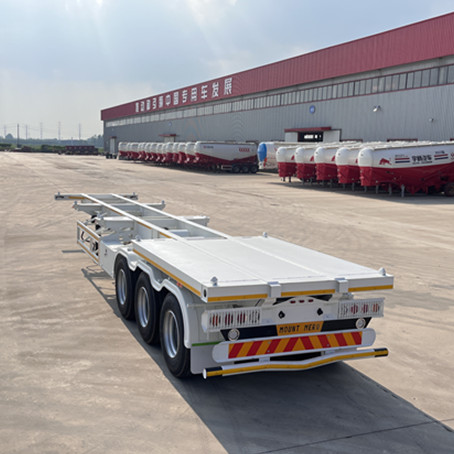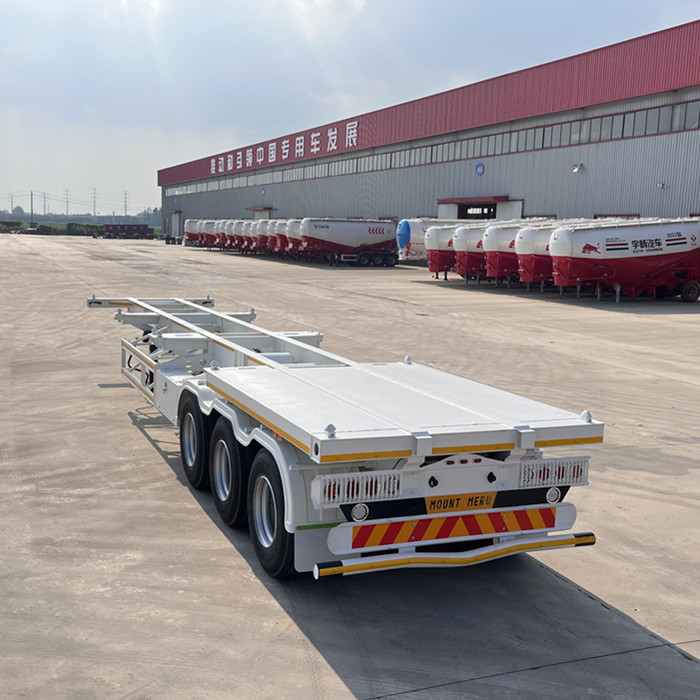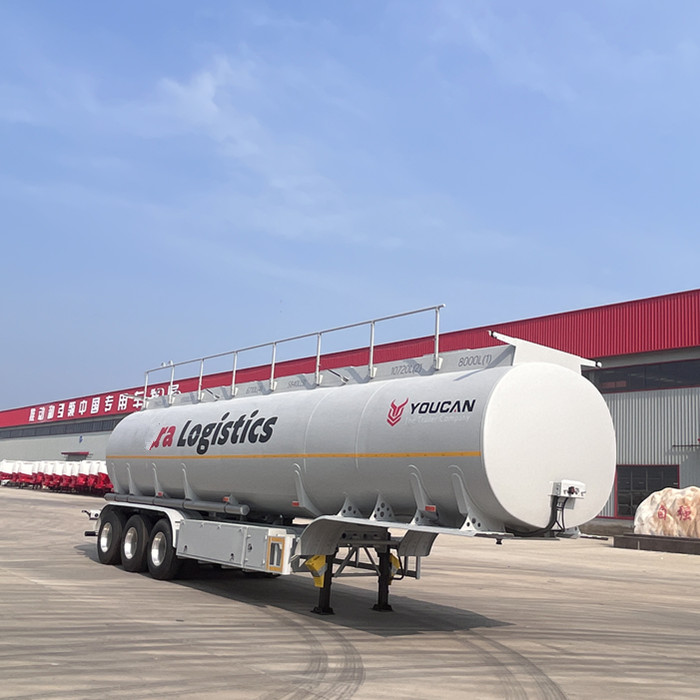How to lift and load containers on a trailer
What is a Container Chassis Semi-trailer?
Container Chassis Semi-trailers are called Container Chassis trailers, semi-Container Chassis trailers. Skeleton trailers are used to transport ISO tanks, ISO containers, reefer containers. The container transport trailer is a type of Container Chassis trailer, and the other is a platform trailer.
Many people need to use containers for a lot of transportation work, but how to lift containers? Let me introduce to you today.

How to lift a container?
The tilting structure of the vehicle can directly lift the container, so that the container can be loaded and unloaded without using a crane.
The container dump trailer is controlled by hydraulic system to improve working efficiency. Usually the price of a container dump trailer is higher, but the convenience it brings is also very impressive.
Its upper frame with rollers is perfectly fixed to the chassis below.
Skeleton Trailer
The rollers work by rotating around the mounting point of the upper rack. There is also a telescopic boom that can be extended longitudinally. The extension arm is related to the weight of the container. Note that the extension arm can not only be extended outwards, it can also be unloaded.
By pivoting, the separation distance between the roller and the cable fixing point can be changed. Thus, the distance of the cable fixing points and the rollers relative to the container structure can be varied.
This way, no external force or power is required to change the distance of the cable whether we move the container or lift it.
This method is only suitable for the pouring process. When the lower frame of the container dump truck is mounted relative to the trailer body, a pivoting movement about the hinge point axis triggered on the upper frame will produce the loading or unloading position as required.
Contact us for specifications and quotes for container dump trailers. Contact us now.
How to load a container onto a trailer?
If there is no crane in the workshop, there are generally 2 ways to transport the container to the trailer.
1. Use side lifts
Containers can be loaded onto trailers via side lifts.
Side lifter, usually refers to a crane module driven by a hydraulic system. This hydraulic system can help lift containers from the ground or transport them from one vehicle to another. The lift is generally located on the top of the chassis and can be moved along the chassis to handle containers of different sizes.
Power:
Typically, sidelifts are powered by engine fuel, but these are powered by the trailer's power take-off, so things are relatively different.In place, you can also use hydraulics to control the landing gear to help lift a fully loaded container. This will ensure that the vehicle is as stable as possible. We can adjust these landing gear to achieve the operation we want, especially when working in some uneven ground, it can improve safety performance and provide more lifting weight. And on the trailer deck, the landing gear can be adjusted to extend and tilt. ,
2. Use a container forklift
We often use forklifts to transport containers. A forklift can easily lift the container and place it on the trailer.
When we use the forklift, we must operate it correctly to reduce the damage to the trailer.
In order to ensure the correct use of the forklift, we must ensure that the operator
1). After being trained on the basic workings of transporting containers by forklift.
2). Know how to operate a dedicated forklift
3) . Learn about the safety measures required when using a forklift
4). Make sure that the forklift is lifted and maintained in a timely manner, and that all parts are working properly.
Forklift Safety:
Lift forks have a backrest extension on the fork, which helps prevent containers from falling onto the side where the driver is seated. This part is very important because most of the container will move in the direction of the driver at the beginning of acceleration, or when it comes to a sudden stop and in rough ground conditions.
The lift forks are also equipped with overhead protection to prevent your container from accidentally falling onto the driver as the carrier lifts or lowers the container.

 WhatsApp
WhatsApp
 sales@youcantrailer.com
sales@youcantrailer.com
 +8615203709888
+8615203709888


